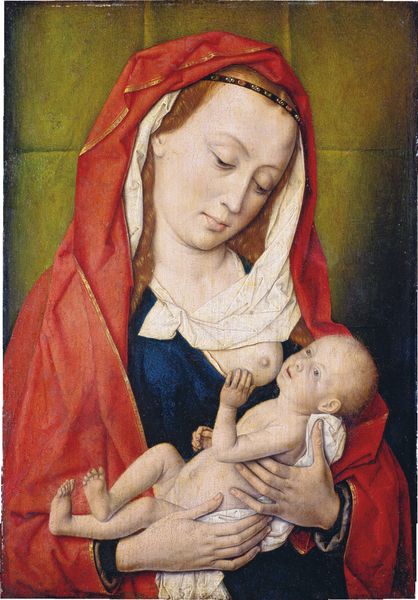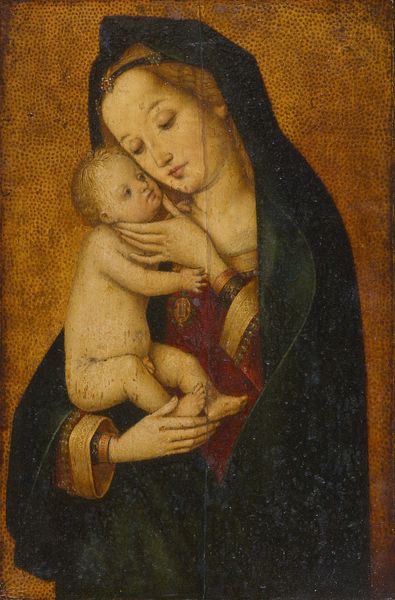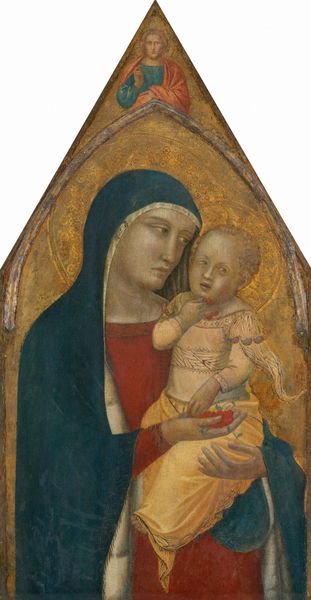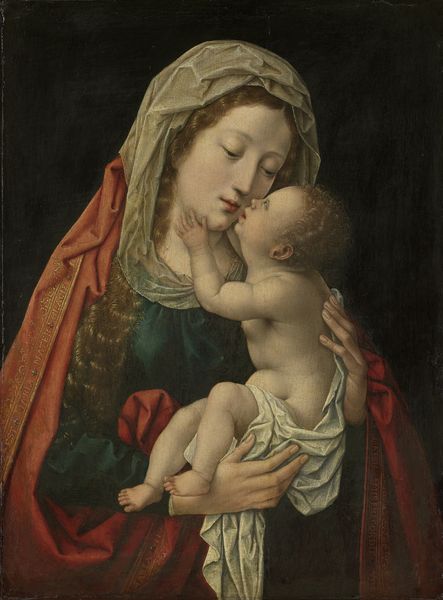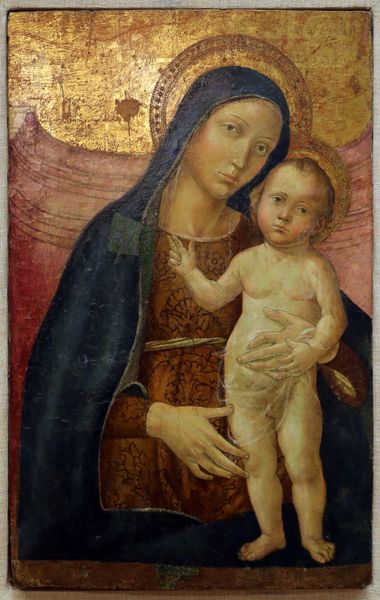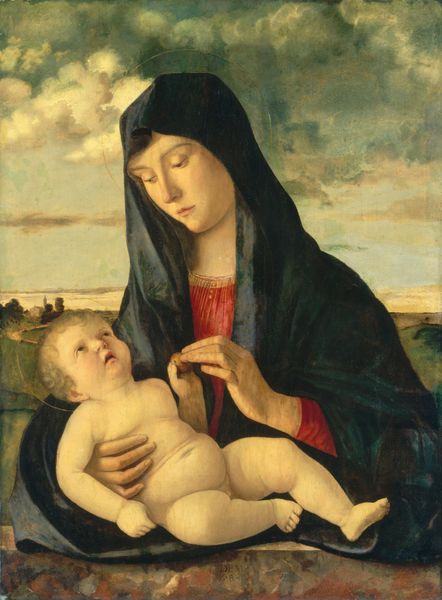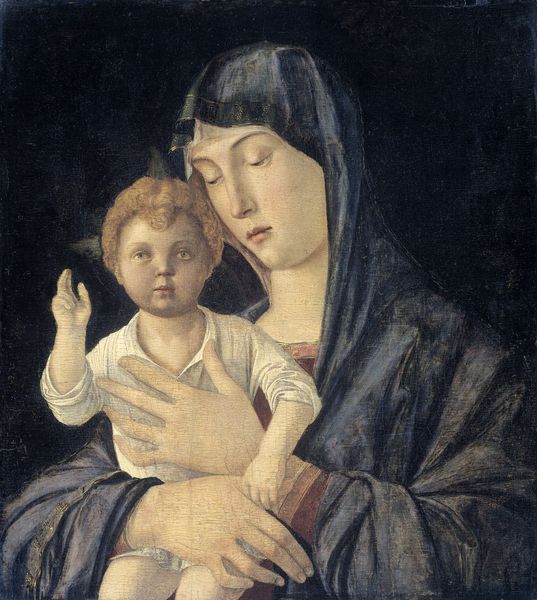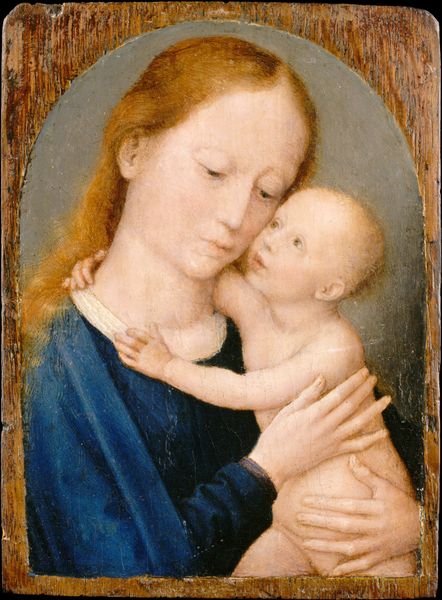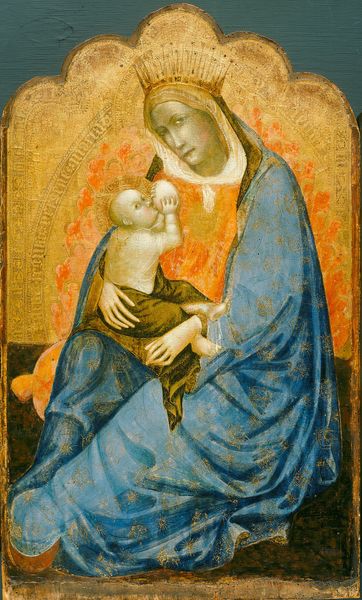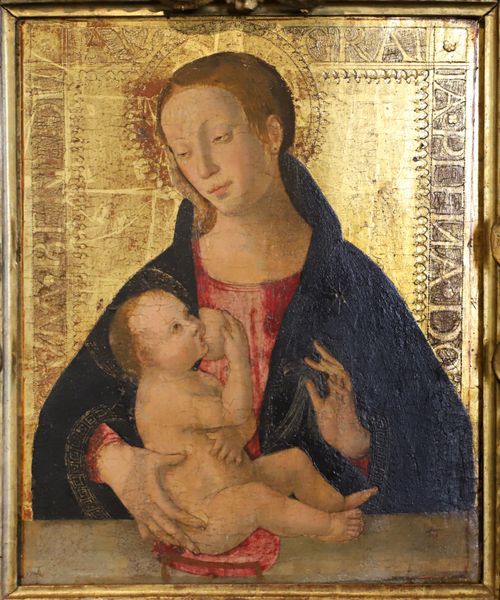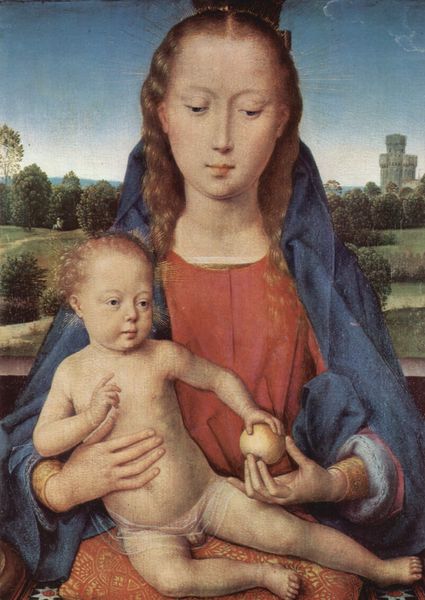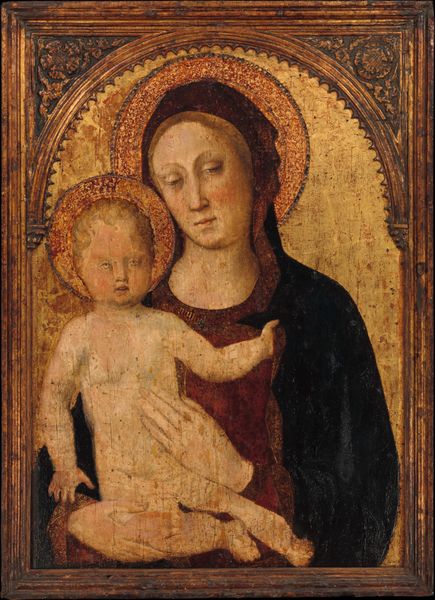
tempera, painting, oil-paint
#
portrait
#
medieval
#
tempera
#
painting
#
oil-paint
#
figuration
#
northern-renaissance
#
early-renaissance
#
miniature
Dimensions: 42.5 cm (height) x 27.5 cm (width) (Netto), 56.5 cm (height) x 44.3 cm (width) x 4.5 cm (depth) (Brutto)
Editor: Here we have a 15th-century painting, "Virgin and Child," artist unknown, held here at the SMK. I'm immediately struck by the quiet, almost melancholic mood. What do you see in this piece? Curator: I see layers upon layers of symbolism, echoes resonating across centuries. Notice how the Virgin's gaze is averted, downcast. This isn't just about humility, it’s a foreshadowing, a premonition of the suffering to come. What do the beads in the Christ child's hands suggest to you? Editor: Hmm, they look like a rosary... but why in a baby's hands? Curator: Precisely! It’s a visual cue, pointing towards Christ's future role. The rosary, a tool for prayer and contemplation, highlights the devotional aspect, even in infancy. Then look at the gold background. It signifies the divine realm, right? Editor: It does create that sense of otherworldliness, separate from earthly concerns. The Madonna and Child are very human though, even with slightly strange proportions… I guess that makes sense, creating both the human and divine in the figures. Curator: The proportions, particularly the elongated forehead of the Virgin, might strike us as odd today, but were deliberate at the time. This elongation was seen as a sign of nobility, wisdom, and spiritual purity, signifying a departure from earthly beauty. Every detail served to reinforce a theological idea. Consider also the placement of the child. What does this visual arrangement tell you about their relationship? Editor: He is clearly the center, nestled in the protection of the Virgin’s cloak and arms. They are very close, literally enmeshed. There’s such humanity… I hadn’t expected to feel this way about a painting with such religious iconography. Curator: Exactly. The piece beautifully balances the human and divine. It allows viewers, even today, to contemplate deeper connections with each figure. Editor: I learned so much, looking beneath the surface to unpack the meanings and hidden contexts! Curator: It’s about learning to see the cultural echoes embedded within. We’ve only just scratched the surface here!
Comments
statensmuseumforkunst almost 2 years ago
⋮
Oil on panel Long term loan 1922 from The New Carlsberg Glyptotek The Virgin Mary and the Christ Child are seen here against a gold background, gold being a symbol of divinity. They occupy a sacred realm beyond concepts such as time and space - a place where no cast shadows exist. Even so, they have clearly delineated contours and forms that convey a convincing sense of volume and texture through subtle transitions between light, semi-shade, and shadow. Bouts' careful study of nature made him a master at painting what seems like a paradox: light-filled shadow. The reflected light shines through and lights up the shadows; see, for instance, the area around Mary's cheek and chin or the rosary's glass beads where light is playing in the shadow side. Bouts' painting is an excellent example of how medieval symbolic imagery fused with Renaissance ideals striving for the greatest possible verisimilitude. The intimate, everyday-like atmosphere and painstakingly detailed naturalism are typical features of the new Early Netherlandish painting of the time.
Join the conversation
Join millions of artists and users on Artera today and experience the ultimate creative platform.
statensmuseumforkunst almost 2 years ago
⋮
The Virgin Mary regards the small, naked infant Jesus with a motherly gaze, gently cradling the child in her hands. Lost to the world as only small children can be he is engrossed with examining a bead in the necklace – a rosary – he wears around his neck. Style and atmosphere The painstaking, technically brilliant modelling of the body, the long, unbound hair of the virgin, and the texture of the textiles all contribute to the convincing verisimilitude of this depiction. The intimate, everyday-like atmosphere and the detailed naturalism are typical traits of the new vein of Dutch painting that emerged with artists such as Jan van Eyck and Dieric Bouts. The history of the painting The painting was originally the left half of an altarpiece designed for private devotions. The other half was presumably a portrait of the altarpiece’s owner engaged in praying to the Virgin Mary and Child.
